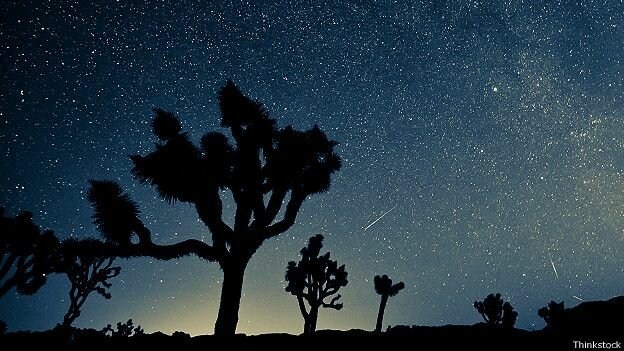GTA astronomers reported that the Perseid meteor rain once again grace the night sky. Perseids – the meteor shower, which appears annually in August from the constellation Perseus. It is formed by the passage of the Earth through the trail of dust particles released comet Swift-Tuttle. The smallest particles, the size of a grain of sand, burn up in Earth’s atmosphere, forming a “Star rain”. Its intensity gradually increases, reaches a peak and then slowly decreases. The stream is active from July 17 to August 24, with maximum generally falls on August 12th. The number of meteors usually reaches 60 per hour.
«Earth flies the dust cloud, where once flew by comet left its own footprint – particles of cometary material».
In 2015, It predicts that the number of shooting stars will be much more than usual. On the night of 12 of August 13, the Earth close to the maximum of the Perseids meteor shower. Enjoy Starfall best away from city lights. The smallest particles, the size of a grain of sand, burn up in Earth’s atmosphere, forming a star rain. Since it is about 55 ° north of the equator, the Perseids best seen in the northern hemisphere.
The Perseids are formed by remnants of the “tail” of the comet. This means that the closer to the 4th morning stars will actually fall with frequency once per minute. To see the meteor shower, we need clear weather. The spectacle promises to be a beautiful meteorites will appear all over the sky, at the hour of about 100 pieces. Perseids very ample and stable Shooting Stars, which was known even before the fresh era.

The Perseids – a stream of dust particles released davnym- long comet Swift-Tuttle, through which the Earth in its motion around the Sun takes place every August.
What we on Earth seems stellar “trail” is actually made up of particles of ice and dust, the size of which varies – from a grain of sand to a pea, and it will enter Earth’s atmosphere at a speed of 60 kilometers per second, thus warming the surrounding air, which produces their characteristic glowing stroke.
If not interfere Clear this meteor rain will be observed by the naked eye across the Northern Hemisphere since the night of August 13.
But such a spectacle could be seen last night near the Bulgarian town of Pirdop
It was at this point is the brightest point of the loop, or the radiant will be at the highest point of the horizon, and the higher the radiant, the more “shooting stars” will be visible.
exact density of meteor shower is difficult to predict, but their number may reach 100 per hour. On average, the researchers say, the Perseids are rascherchivat night sky every minute.
The stream got its name because the observer on Earth meteors come from the constellation Perseus
Perseids are activated every year from July 17 to 24 August, but the most active phase is observed only in the short period of mid-August.
Director of the Armagh Observatory in Northern Ireland Professor Mark Bailey calls Perseids one of the most beautiful and reliable meteor showers of the year.
British fans to watch the starry sky to hope that the clouds at least briefly appeared clearance
senior editor of Sky and Telescope Alan McRobert adds that since this time the first time since 2007 Perseids coincided with the new moon, seen on non-illuminated sky meteor rain to be particularly exciting.
To better see the meteor shower, experts advise to find a place away from city lights, which would see the whole sky.
Some amateur astronomers have been able to see and capture the meteor Feed in the days before the peak of activity.


 Alexander G. Hooks
Alexander G. Hooks  Igor Vishnevsky
Igor Vishnevsky  Yevgeny Nazarov
Yevgeny Nazarov  Victoria Lepsky
Victoria Lepsky
No comments:
Post a Comment